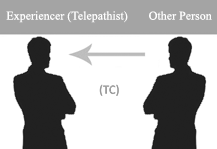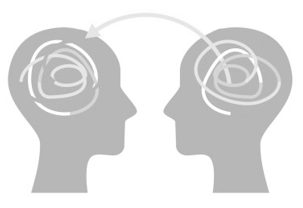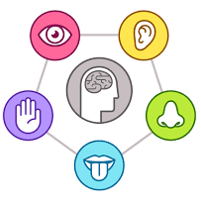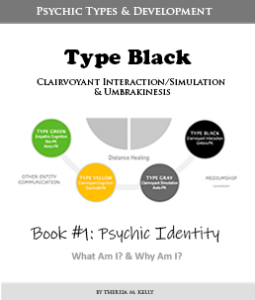- What Am I? (Type White)
- Psychic “Ability” (Type White)
- Psi, ESP, & Clairvoyance (Type White)
- Dreams, Impressions, & Hallucinations (Type White)
- Telepathic Cognition (Type White)
TELEPATHIC COGNITION
The two main types of extrasensory perception talked about before, telepathy and clairvoyance, may seem somewhat similar too, but are actually quite different. Telepathy involves a connection and influence between two minds, while clairvoyance involves a connection and influence between the state of a physical object, person, or situation to a mind. This means that nature, or the universe, as a whole is always aware of the physical state of affairs, which in turn communicates such information to a mind. It helps if you think of the universe as one big computer or living brain that is aware, can think, and can form memories.
This difference between telepathy and clairvoyance is taken to be a difference between two forms of experiences. The goal of telepathic experiences is assumed to involve a person’s thoughts or mental states (example: how a person feels, thinks). In contrast, the goal of clairvoyant experiences is assumed to involve a physical situation or event that may or may not include other people.
This is viewed as telepathy being “direct,” since it involves a direct connection between two minds; whereas clairvoyance is viewed as “indirect,” because it only results in finding out about the physical situation of a thing or person, rather than directly finding out about a person through the person them self.
There are three sub-types of Telepathy:
- Telepathic Cognition (TC) applies whenever information is telepathically received by the experiencer from person.
- Telepathic Interaction (TI) applies whenever information is telepathically received by a person from the experiencer.
- Telepathic Simulation (TS) applies whenever information is telepathically shared between the experiencer and a person.
The main feature of Telepathic Cognition is the direct knowledge of another person’s thoughts or mental states by the experiencer.
 In cases of telepathic cognition one person, the experiencer, is retrieving information such as words, images, sounds, ideas, and emotions from another person, a non-experiencer. In other words, one person is able to “pick up on” the thoughts of another person.
In cases of telepathic cognition one person, the experiencer, is retrieving information such as words, images, sounds, ideas, and emotions from another person, a non-experiencer. In other words, one person is able to “pick up on” the thoughts of another person.
With telepathic cognition, the non-experiencer does not play a purposeful part in the information receiving process. Instead, the process is completely started and finished by the experiencer. So, the “receiver” is both the telepathist and the sole director of the experience.
Here the experiencer will become aware of the other person’s mental state or states but should be able to clearly tell that the thoughts or emotions did NOT start within their own mind.
 The information is received and perceived by the experiencer, but the thought or emotions did not develop from a chain of previous thoughts or feelings belonging to the experiencer.
The information is received and perceived by the experiencer, but the thought or emotions did not develop from a chain of previous thoughts or feelings belonging to the experiencer.
Instead, the thoughts or emotions appear to “POP UP” into their mind but are immediately identified with a single person other than the self, or simply identified as not belonging to the self.
 Hallucinations that may happen include any form of the senses with the most common including sight/visual, sound/auditory, smell/olfactory, taste/gustatory or touch/pressure/tactile.
Hallucinations that may happen include any form of the senses with the most common including sight/visual, sound/auditory, smell/olfactory, taste/gustatory or touch/pressure/tactile.
However, sight and sound are the most commonly reported hallucinations experienced by those that are awake or in an altered state of consciousness like meditation, while waking up or falling asleep, or in a trance state.
Hallucinations are usually light and natural feeling unless they are made LOUD AND INTENSE by stress or mental/physical disorders. For example, and anxiety disorder can result in confused subconscious needs and goals whereby resulting in the over-stimulation of the senses and loud intense hallucinations.







